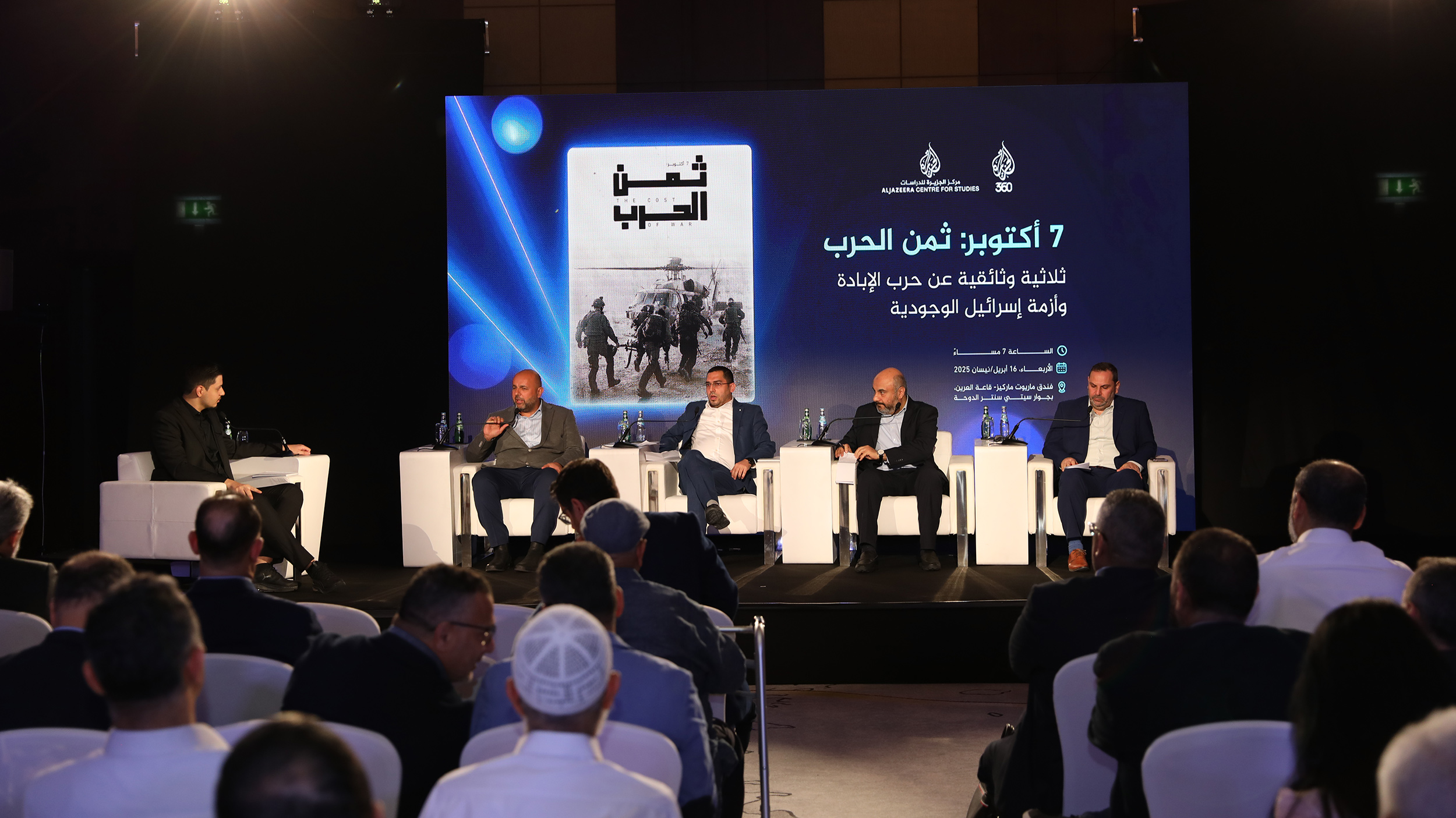
Al Jazeera Centre for Studies, in cooperation with Al Jazeera 360, organised a panel discussion in Doha, following the screening of the documentary, 7 October: Thaman al-Harb [October 7: The Price of War]. The film is the first instalment of a documentary series produced by Al Jazeera 360, documenting the Hamas-led attack on 7 October 2023, and exploring its profound impact on Israel—both as a state and a society.
The documentary sheds light on the Israeli perspective of Operation Tufan al-Aqsa through interviews with a diverse group of Israelis, including parents of soldiers and officers, journalists and experts. It also includes Palestinian voices that critically challenge this narrative. These testimonies reflected the magnitude of the shock caused by the attack and the confusion that overwhelmed Israel’s military and security institutions.
Testimonies in the film suggest that the surprise assault on settlements and military bases surrounding the Gaza Strip represented a major security and intelligence failure. It revealed fundamental lapses in anticipating Hamas’s movements and intentions, contributing to a growing erosion of public confidence in the Israeli military and intelligence services, which were long considered invincible.
The film also presents what many Israelis described as “collective responsibility” among Gaza’s civilian population, asserting that blame for the attack extended beyond Hamas to include civilians who allegedly provided support or participated in breaching the border fence. From the Israeli perspective, this was framed as evidence of “popular complicity”, used to justify the policy of collective punishment.
In this context, the film shows that Israel’s intense military response aimed to restore deterrence and “punish those responsible for the operation”. It also highlights the extensive political and military support Israel received from the United States and Western countries, which paved the way for a large-scale aerial and artillery campaign targeting Gaza’s infrastructure. This assault resulted in thousands of civilian casualties, including women and children. Several voices in the documentary argued that this response amounted to genocide, facilitated by international cover and widespread indifference.
Conversely, the Palestinian voices featured in the documentary offered a different interpretation, arguing that Israel’s war on Gaza constitutes a strategy of collective punishment aimed at dismantling the resistance and forcibly displacing the population—not only in Gaza, but also in the West Bank. According to this perspective, the massive destruction was not incidental but deliberate and systematic, intended to render Gaza uninhabitable and force mass displacement in pursuit of long-term political and demographic objectives.
The documentary also includes the testimony of a senior Hamas leader, who acknowledged that some violations occurred in the aftermath of the attack, as civilians from Gaza entered Israeli military outposts. However, he emphasised that these actions were isolated and not part of an organised policy. He framed them as responses to an exceptional moment shaped by the sudden collapse of Israeli defences and long-standing anger over occupation and blockade, stressing that such acts do not reflect the official stance of the movement.
Following the screening, the panel featured an in-depth discussion with researchers and specialists, including one of the documentary’s producers. The participants agreed that the film represents a valuable contribution to the construction of a counter-narrative that challenges the dominant, Western-backed Zionist narrative. They argued that the documentary goes beyond documentation to offer an alternative account—one that centres the lived reality and restores the Palestinian voice in a global media landscape dominated by official narratives.